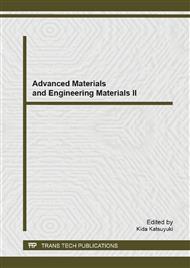p.859
p.865
p.869
p.877
p.881
p.885
p.889
p.894
p.899
The Motor Fault Diagnosis Based on Neural Network and the Theory of D-S Evidence
Abstract:
In order to reduce the uncertainty of the traditional method that use a single parameter in the motor fault diagnosis, create a reliable motor fault diagnosis model by using multivariate information fusion technology and the combination of neural network and the theory of D-S evidence .First, fusion the information of many kinds of sensors, preliminary identify the modes of failure, find the information of different fault feature by analysing and processing data, establish the domain of feature. Then part diagnose the domain of feature by using neural network. The local diagnosis results form independent evidence body. Calculate the credibility of the fault distribution of each evidence body for recognition framework. It is difficult to discriminant fault types by directly using these reliability distribution. So choose appropriate D-S evidence formula to fusion each evidence body and further process and analyse the information of evidence. The credibility of the distribution is nearer and nearer to the judgement threshold value of fault types with one fusion, and the rest of the credibility distribution of the fault is more and more smaller. So the basic reliability distribution has better peak and separability, the diagnose results is more accurate, and finally achieve accurate diagnosis of the motor fault. The diagnosis example shows that the diagnosis method based on neural network and the theory of D-S evidence can realize comprehensive diagnosis of motor fault by using multi-resources information. The reliability and accuracy of this diagnosis method are far higher than that of the local diagnosis using single feature. It improves the precision of the motor fault diagnosis.
Info:
Periodical:
Pages:
881-884
Citation:
Online since:
April 2013
Authors:
Price:
Сopyright:
© 2013 Trans Tech Publications Ltd. All Rights Reserved
Share:
Citation:


